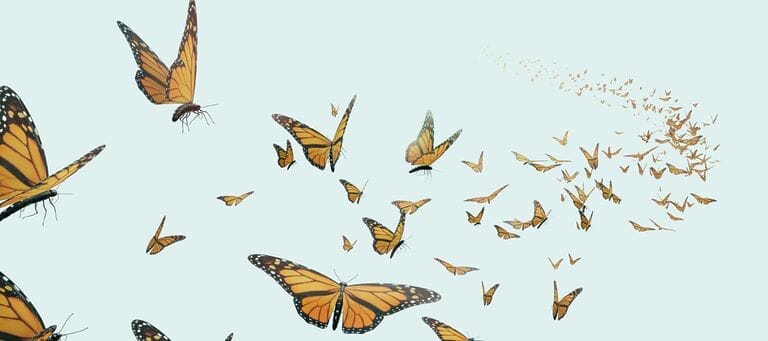Imagine that you are walking down a dimly lit street at night, and you spot a stranger in casual attire approaching you. Your heart races a little, and you instinctively clutch your belongings tighter.
But why?
Unconscious bias has just made its presence felt.
Unconscious bias is a hidden force that silently influences our perceptions and behaviours. It’s a phenomenon that affects us all, driven not only by visible diversity characteristics like gender and ethnicity but also by more subtle factors such as height, body weight, and even names. Our brain’s automatic, quick judgments are influenced by our background, personal experiences, societal stereotypes, and cultural context. These judgements, or biases, play a significant role in shaping our thoughts, actions, and decisions.
Why do we have Unconscious Bias?
Our brains are remarkable information-processing machines. However, they’re not flawless. To cope with the onslaught of data bombarding us every instant, our brains employ shortcuts. This mental agility is a survival strategy that has evolved over thousands of years. Unconscious bias works as a mental filter, sorting information into familiar boxes – friend or foe, safety or risk – allowing us to rapidly categorise information for quick decision-making.
Development of Unconscious Bias
Unconscious bias isn’t learned overnight; it’s a gradual process that begins in childhood. As we grow up, we absorb information from our families, friends, and the world around us. These influences not only help to form our beliefs and values but they sow the seeds of biases. Repeated exposure to specific behaviours or ideas forms connections within our brains, crafting biases that often take root unnoticed. This exposure gradually moulds our perception of what’s “normal” and what’s “different,” shaping our judgments of what’s “good” and what’s “bad.”
The Building Blocks of Biases
This development of unconscious biases stems from several influences and tendencies. They include:
Culture – The company we keep during our formative years significantly shapes our belief system. Our culture, a blend of familial, social, and community influences, guides our perceptions and behaviours. As we develop, the conversations and experiences around us subtly influence us.
Patterns – Humans are natural pattern seekers; we thrive on categorising information to navigate reality efficiently. During our childhood, we gravitate towards groups for a sense of belonging. At the same time, we identify differences in others. However, without proper guidance, this innate process might lead to labelling differences as “bad” and similarities “good”, inadvertently creating unconscious biases that follow us into adult life.
Oversimplification – As well as liking patterns our brains adore simplicity. Creating categories is an easy way for the brain to make sense of the world. While expedient, this process can sometimes oversimplify complexities, which may create inaccuracies and biases that can result in unfair treatment.
Media – Consuming media is now a daily activity for almost all people. It can be accessed in paper form and digitally, at home or on the go. It can mould our perceptions and normalise certain views. However, if media carries inherent biases, these biases can infiltrate our thoughts over time and become part of our own beliefs and biases.
Personal Experiences – Experiences with certain groups can lead to heightened bias relating to them. These personal experiences, whether favourable or unfavourable, can significantly impact our perceptions and attitudes towards these groups. The memories and emotions tied to these experiences create a lens through which we interpret similar situations, inadvertently reinforcing our biases.
Association – Our brains tend to associate certain characteristics with specific roles, often due to repeated exposure. For instance, if we consistently see women depicted as caregivers, our brains automatically link those traits. This association influences how we perceive individuals based on surface-level attributes.
Confirmation Bias – We tend to seek information that confirms our existing beliefs. When we encounter information that reinforces our preconceived ideas, our brains respond with a sense of validation. Consequently, we gravitate towards information that supports our biases, inadvertently closing ourselves off to diverse perspectives.
“I’m Not Biased, Am I?”
Research into unconscious bias has revealed astonishing findings: even those who adamantly deny harbouring bias can exhibit implicit biases. A Harvard study introduced the Implicit Association Test (IAT), which measures the strength of associations between concepts and evaluations – unconscious biases. The results showed that even individuals who professed no bias exhibited significant implicit biases.
Making the Unconscious Conscious
Unconscious bias is a deeply rooted aspect of human cognition. It is influenced by our experiences, culture, and the brain’s natural processing mechanisms. Acknowledging its existence is the first step toward mitigating its effects. By recognising our biases and engaging in practices that challenge them, we can create a more equitable society that values individuals for who they truly are, not the stereotypes we unconsciously associate with them.
How does this translate into your recruitment processes?
If you’d like to speak to us or find out more about how we could support you or your business, get in touch here. We’d love to hear from you.


